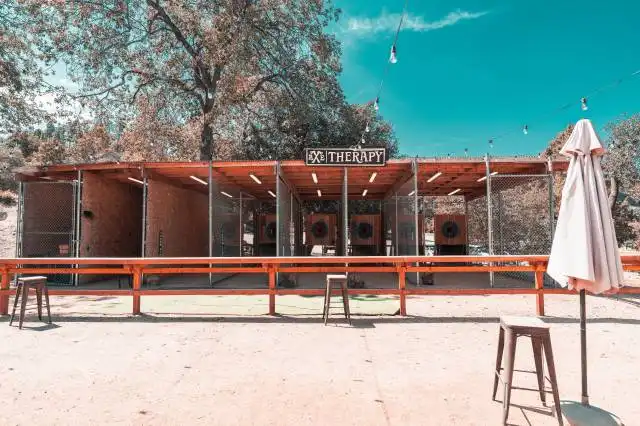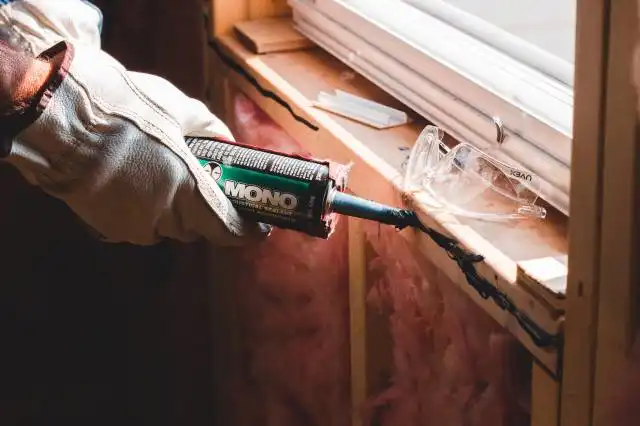Start a Mobile Rock Climbing Wall Business
Ascent to Success: Exciting Adventures in a Mobile Rock Climbing Business
| Updated


MOBILE ROCK CLIMBING WALL BUSINESS
Ever thought about conquering mountains was easier? Welcome to the highly innovative mobile rock climbing wall business! It's an adventurous venture where you'll set up portable rock climbing walls at events, parties, or public spaces, bringing the thrill of mountain climbing straight to adrenaline junkies...minus the mountain! Your entrepreneurial journey here will be about as exciting as the climbing adventure you’ll be providing to your customers!
Jump to Business Plan
RELATED BUSINESS IDEAS
Browse ALL Hospitality & Leisure Ventures Business Ideas
Discover Your Perfect Domain
Unlock the door to your online success with our hand-picked selection of premium domain names. Whether you're starting a new venture or rebranding an existing one, the right domain can set the tone for your digital presence. Browse through our curated list, each with its unique potential to enhance your brand's visibility and credibility.
MOBILE ROCK CLIMBING WALL MINI BUSINESS PLAN
This a quick reality check to help you identify the strengths and weaknesses of your business concept before you dive in.
Expected Percent Margin:
- Gross Margin: 70-80%
- Net Profit Margin: 20-30%
Earnings Expectations:
- Daily Earnings (based on 1 event/day): $400 - $800
- Weekly Earnings: $2,800 - $5,600
- Monthly Earnings: $12,000 - $24,000
- Annual Earnings: $144,000 - $288,000
Note: Annual earnings take into account that there might be a slow season when events are less frequent
Actions to Hit Those Numbers:
Initial Investment:
- Investment Range: Purchase a mobile rock climbing wall ranging from $15,000 - $100,000 based on quality and size.
On-Location Activities:
- Booking Events: Ensure a minimum of 1-2 events per day. This could be birthday parties, corporate events, fairs or community festivals.
- Equipment Maintenance: Keep climbing equipment such as harnesses, helmets, and wall grips in
top-notchcondition.
Marketing and Customer Acquisition:
- Networking: Regularly network with event planners, corporate teams, and community event organizers.
- Online Presence: Have a strong online presence with an easy-to-use website and active social media.
Sales and Customer Experience:
- Pricing: Offer various packages based on event requirements and group size.
- Safety: Train staff on safety procedures and provide briefings to participants before climbing. This will increase customer confidence and likelihood for recurring bookings.
Cost Management:
- Fuel and Transportation: Optimize event routes and schedules to minimize fuel consumption and cost.
- Insurance: Ensure that insurance is cost-effective and covers the potential risks of the business.
These numbers are estimations based on industry averages and can widely vary based on several factors like geographical location, size of the climbing wall, how frequently it is in use, competition, etc. Always consult a financial advisor or business coach to work out detailed financials.
NOT WHAT YOU HAD IN MIND? Here are more ideas



Browse ALL Hospitality & Leisure Ventures Business Ideas
Grab Your Business Website Name
Before you get caught up in the whirlwind of setting up your business, invest in a domain name. It's a small but significant step that lays the foundation for your brand and makes it easier for customers to find and trust you. Just like you wouldn't build a house without securing the land first, don't build a business without securing your domain name.
"Why? Can't that wait?" Here's why it shouldn't
Step 1: Determine if the Business is Right for You
Before starting a mobile rock climbing wall business, it is important to determine if this is the right venture for you. This includes researching the startup and ongoing expenses associated with the business, as well as potential ways to make money.
Breakdown of Startup Expenses
When starting a mobile rock climbing wall business, there are a variety of startup costs that must be taken into account. These costs include the cost of the mobile wall itself, any necessary permits or licenses, insurance, and any additional equipment needed. Additionally, you will need to consider the cost of marketing and advertising, as well as any other costs associated with getting the business off the ground.
Breakdown of Ongoing Expenses
In addition to startup expenses, there are also ongoing expenses associated with running a mobile rock climbing wall business. These expenses include the cost of maintaining the wall and any other equipment, as well as the cost of fuel for transporting the wall to different locations. Additionally, you will need to consider the cost of insurance and any other costs associated with running the business.
Examples of Ways to Make Money
When starting a mobile rock climbing wall business, there are a variety of ways to make money. These include charging customers for access to the wall, as well as offering additional services such as instruction, equipment rental, and more. Additionally, you may be able to partner with local businesses or organizations to offer discounts or other incentives to customers. Finally, you may also be able to offer corporate events or team building activities to generate additional revenue.
Step 2: Name the Business
When it comes to naming a business, it is important to pick something that is memorable and easy to say. It should also be something that reflects the business’s mission and values. It is also important to make sure that the name is not already taken by another business. To ensure that the name is unique, it is a good idea to do a search on the internet to make sure that the name is not already taken. Additionally, it is important to make sure that the name is not too long or complicated. A good way to make sure that the name is easy to remember is to use a word or phrase that is associated with the business. For example, if the business is a mobile rock climbing wall, the name could include words like “climb” or “rock”. It is also important to make sure that the name is easy to spell and pronounce. Finally, it is important to make sure that the name is available as a domain name, as this will be important for marketing the business.
Step 3: Develop a Business Plan
Outline Objectives
When developing a business plan, it is important to outline the objectives of the business. This includes goals such as the number of customers you want to serve, the types of services you will offer, the types of equipment you will use, and the amount of money you want to make. Additionally, you should include a timeline for when you want to reach certain milestones.
Establish a Budget
Creating a budget is an essential part of starting any business. When creating a budget for a mobile rock climbing wall business, you should include the cost of purchasing or leasing the necessary equipment, the cost of any necessary permits or licenses, and the cost of marketing and advertising. Additionally, you should include any ongoing costs such as insurance, maintenance, and any wages you will need to pay employees.
Identify Target Market
Identifying your target market is an important step in developing a business plan. You should consider who your ideal customer is and what types of services they are looking for. Additionally, you should consider the geographical area you want to serve and any potential competition in the area. Once you have identified your target market, you can create a marketing plan to reach them.
Step 4: Obtain Necessary Licenses and Permits
In Step 4 of starting a mobile rock climbing wall business, it is important to research local regulations and obtain the necessary licenses and permits. Depending on the location of the business, there may be different regulations and permits required. It is important to research the local regulations to ensure that the business is in compliance with all the necessary laws and regulations.
When researching local regulations, it is important to consider the type of business being operated. For example, if the business will be operating in a residential area, there may be restrictions on the type of business that can be operated. Additionally, if the business will be operating in a commercial area, there may be additional regulations that must be followed. It is important to research the local regulations to ensure that the business is in compliance with all the necessary laws and regulations.
Once the local regulations have been researched, it is important to obtain the necessary licenses and permits. Depending on the location of the business, there may be different licenses and permits required. For example, if the business will be operating in a residential area, there may be a permit required to operate the business. Additionally, if the business will be operating in a commercial area, there may be additional licenses and permits required. It is important to obtain the necessary licenses and permits to ensure that the business is in compliance with all the necessary laws and regulations.
Finally, it is important to keep all the necessary licenses and permits up to date. Depending on the location of the business, there may be different regulations and permits that must be renewed on a regular basis. It is important to keep all the necessary licenses and permits up to date to ensure that the business is in compliance with all the necessary laws and regulations.
Step 5: Secure Financing
Explore Funding Options
Before securing financing for your mobile rock climbing wall business, you should explore all of the available funding options. This includes traditional bank loans, venture capital, crowdfunding, and other sources of financing. You should also consider the pros and cons of each option to determine which one is best for your business. Additionally, you should research any available grants or tax incentives that may be available to help you finance your business.
Create a Financial Plan
Once you have identified the best funding option for your business, you should create a comprehensive financial plan. This plan should include a detailed budget for startup costs, ongoing expenses, and projected revenue. It should also include a timeline for when you expect to break even and start making a profit. Additionally, you should include any potential risks or challenges that may arise and how you plan to address them. This financial plan will be essential for securing financing from potential investors or lenders.
Step 6: Purchase Equipment
Researching different types of equipment is an important step in starting a mobile rock climbing wall business. It is important to consider the types of walls that are available, the safety features, and the cost of the equipment. There are many different types of walls that can be used for a mobile rock climbing wall business, including portable walls, modular walls, and permanent walls. It is important to research the different types of walls to determine which one is best for the business.
When researching different types of walls, it is important to compare prices and quality. It is important to find a wall that is of good quality, but also within the budget of the business. It is important to research different suppliers and compare prices to ensure that the best deal is being made. It is also important to research the safety features of the wall to ensure that the wall meets the safety standards of the business.
When purchasing the equipment, it is important to consider the size and weight of the wall. The size and weight of the wall will determine how easy it is to transport and set up the wall. It is important to purchase a wall that is lightweight and easy to transport, but also sturdy and secure. It is also important to consider the cost of the equipment, as this will determine the overall cost of the business.
Finally, it is important to consider the installation and maintenance of the wall. It is important to research the installation process of the wall and determine if the business has the necessary tools and resources to install the wall. It is also important to research the maintenance of the wall and determine if the business has the necessary resources to maintain the wall. This will ensure that the wall is kept in good condition and is safe for customers to use.
Step 7: Market the Business
Step 7: Market the Business. Developing a marketing plan is essential for any business, and a mobile rock climbing wall business is no exception. A marketing plan should include a budget, target audience, and strategies for reaching that audience. It should also include a timeline for when the business will launch, as well as a timeline for when the business will start to see a return on its investment. Additionally, it should include measurable goals that can be tracked and adjusted as needed.
When it comes to marketing a mobile rock climbing wall business, social media is a great tool. Platforms such as Facebook, Instagram, and Twitter can be used to reach potential customers and spread the word about the business. Additionally, these platforms can be used to post pictures and videos of the mobile rock climbing wall in action, which can help to create a buzz and draw in customers.
Another great way to market a mobile rock climbing wall business is to partner with local businesses. For example, a rock climbing wall business could partner with a gym or fitness center to offer discounts to members. Additionally, partnering with a local charity or non-profit organization can be a great way to spread the word about the business and give back to the community.
Finally, word-of-mouth is still one of the most effective ways to market a business. Encouraging customers to leave reviews and share their experiences can help to draw in new customers. Additionally, offering incentives such as discounts or freebies for customers who refer their friends can be a great way to get the word out about the business.
Step 8: Develop a Pricing Strategy
Determine Costs
Before setting prices for your mobile rock climbing wall business, you must first determine your costs. This includes startup costs such as the cost of the wall, any necessary permits, and any other necessary equipment. It also includes ongoing costs such as insurance, maintenance, and any other costs associated with running the business.
Set Prices
Once you have determined your costs, you can begin to set prices for your services. Consider the market rate for similar services in your area, as well as any discounts or promotions you may want to offer. You should also consider any additional services you may offer, such as instruction or equipment rental, and how much you will charge for those services. Additionally, you should consider any discounts or promotions you may want to offer to attract customers. Finally, you should also consider any discounts or promotions you may want to offer to groups or organizations.
Step 9: Hire Employees
Determine Needed Staff
Before hiring any employees, it is important to determine the exact roles and responsibilities needed for the mobile rock climbing wall business. This includes assessing the number of staff needed to operate the business, as well as the type of staff needed. For example, the business may need a manager to oversee the operations, a customer service representative to handle customer inquiries, and a technician to maintain and repair the equipment.
Create Job Descriptions
Once the roles and responsibilities have been determined, the next step is to create job descriptions for each position. This should include the duties and responsibilities of each position, as well as the qualifications and experience needed. It is also important to include the salary range for each position, as well as any benefits that may be offered.
Recruit and Hire Employees
After the job descriptions have been created, the next step is to recruit and hire employees. This can be done through job postings on job boards, or by networking with other businesses in the industry. It is important to thoroughly vet potential employees to ensure they are qualified and have the necessary experience. Once the right employees have been identified, it is important to provide them with the necessary training and resources to ensure they are successful in their roles.
EXPLORE MORE CATEGORIES
Browse ALL Business Idea Categories
TAKE THE NEXT STEPS









